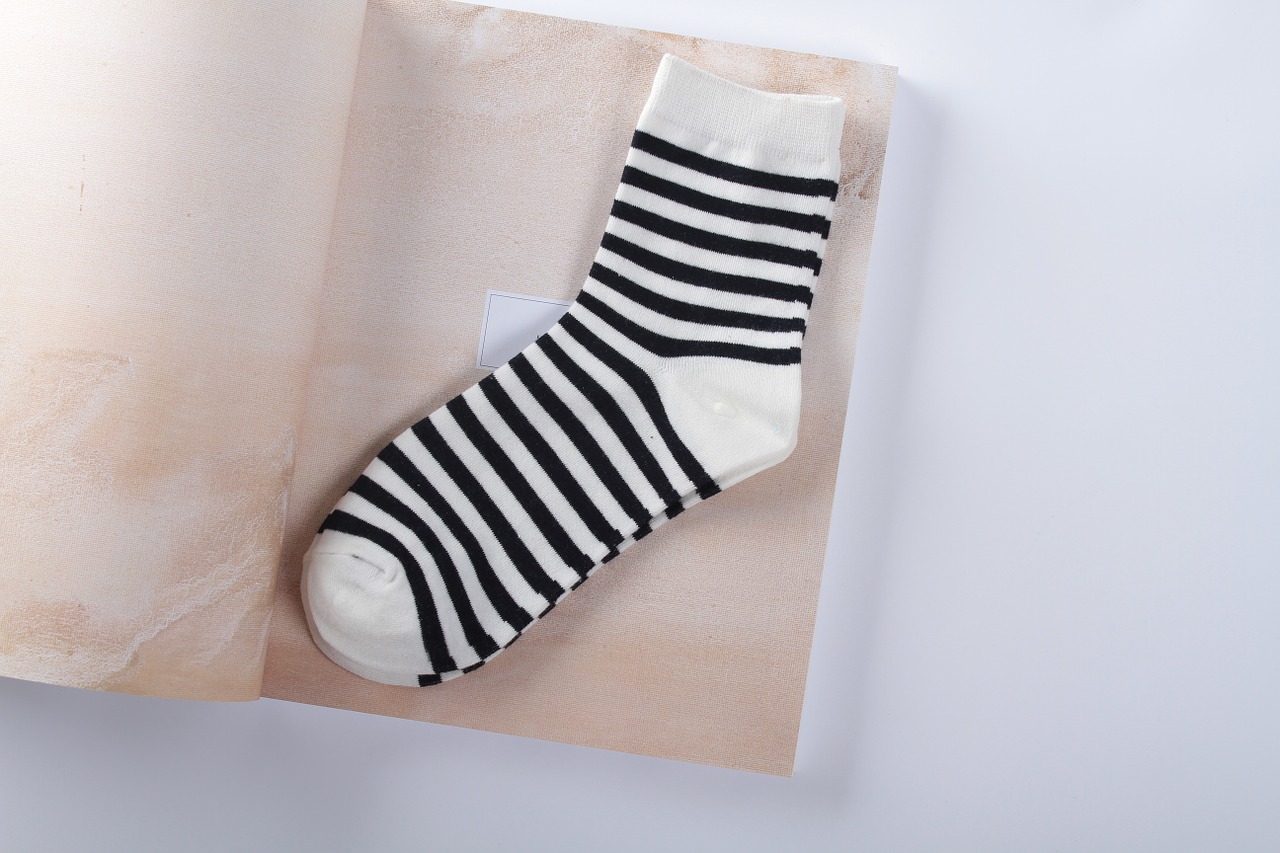Socks - types of socks and cruelty free vegan options

Even though we wear them on our feet almost every day, socks are rarely thought of as being an important peace of clothing as they are mostly being covered be other cloths and remain unseen. Nevertheless, uncomfortable or unsuited socks can leave our feet in pain and limit our strength for the rest of our planned activities for that day or even longer. Socks may wear fairly quickly depending on their quality, purpose and intensity of use.
Common materials and fabrics for socks
Light socks were historically made mostly from cotton, which is still very common now but it falls behind to a second place after synthetic fabrics. Warm socks traditionally was produced out of animal products, especially wool, fortunately in recent years there are more and more animal friendly and sustainable alternatives rising on the market due to synthetic alternative profitability and increasing awareness to this issue in general public.
Most commonly used animal derived fabrics for socks production: wool, silk, mohair, cashmere, angora and also a blended fabrics that include those materials. Of coarse there are cruelty free alternatives – plant based and man-made ones. For each of those fabrics there are alternatives, that have all important features to those of animal fibers and frequently even superior to them.
There is also a practice of putting protective leather at socks bottom to reduce abrasion, increase durability and prolong socks utilization time. There are wonderful alternatives for that as well – various kinds of anti-abrasion durability socks made out of blended fabric, consisted of cotton and synthetic fibers, usually polyamide, nylon and polypropylene.
Some description based on different types of socks
There are different ways to classify socks. Most commonly accepted way is by the socks' length. Some common types in this classification from shortest to longest are: no-show length, liner, ankle, mid-calf, over the calf, knee and over the knee lengths. Some socks can have split toes, but most aren't.
Each type of socks can be further categorized based on warmth they provide us with, along with material type and thickness and what season/temperature range they are appropriate to be worn at.
- Winter socks
- Winter socks are produced to retain body warmth during cold weather. Traditionally winter socks were made out of various types of wool and they still are in modern times. Seek a synthetic alternatives, which are very abundant and even can be more effective, comfortable and durable.
- Sport socks
- Sport socks can be subdivided to ones made for winter sports, like skying and snowboarding and socks made for other athletic activities. Winter socks frequently made from wool (merino wool is particularly popular) or blends of synthetics and wool. Please beware and make sure you are buying a synthetic, man made or blend of synthetic and plant based produced socks. Synthetics and some man made fibers have one distinct adventure over wool – they dry faster, other features can be made the same based on sock's quality. Other types of athletic socks made primarily with cotton and synthetics blended fabrics, although some animal derived fibers can be used as well. Please pay attention and check out the socks label to make sure you're not funding animal cruelty with your money by buying animal based materials.
- Light socks
- they are thin and light weight, breathable and moisture absorbent at least to some degree. Mostly made of cotton and other plant based fabrics, synthetic fabrics and blended materials. Those socks can also be produced from blended materials containing silk or from silk fabric- please beware.
- Thermal socks
- Thermal socks are made to keep your feet warm even at a really cold winter. Thermal socks are typically made out of wool, synthetic materials like acrylic or a blend of the two types. If animal cruelty issues are important to you please buy the synthetic alternatives, they are truly great options and are generally more durable then their wool made counterparts.
- Waterproof socks
- Waterproof socks are typically made of waterproof membrane covered inside and outside by a knit fabric thin layers. Those layers can be made from animal based, plan based, synthetic or blended fabrics. It is important to check the label. Waterproof membranes are mostly made of synthetic materials.
Last word of advise
The easiest way to ensure cruelty-free purchase is, of coarse, a vegan or vegan-friendly labeling, but not all companies labeling their vegan products as such. Asking the stuff is also a great option while buying in the store, if they do not know there is an option of contacting a manufacturer or reaching out to a vegan group for some advise. There are also some apps available exactly for finding out if products are vegan.
There are also other ethical issues which are important to keep in mind, such as human workers treatment and the environment. As a general rule, recycled and organic brands frequently are more environmentally friendly and will offer better solution for ethical workforce treatment. Companies specializing on vegan or cruelty free clothing production are also a good bet on ethical and environmental issues. Please be aware on those issues and keep them in mind during your next socks shopping.
